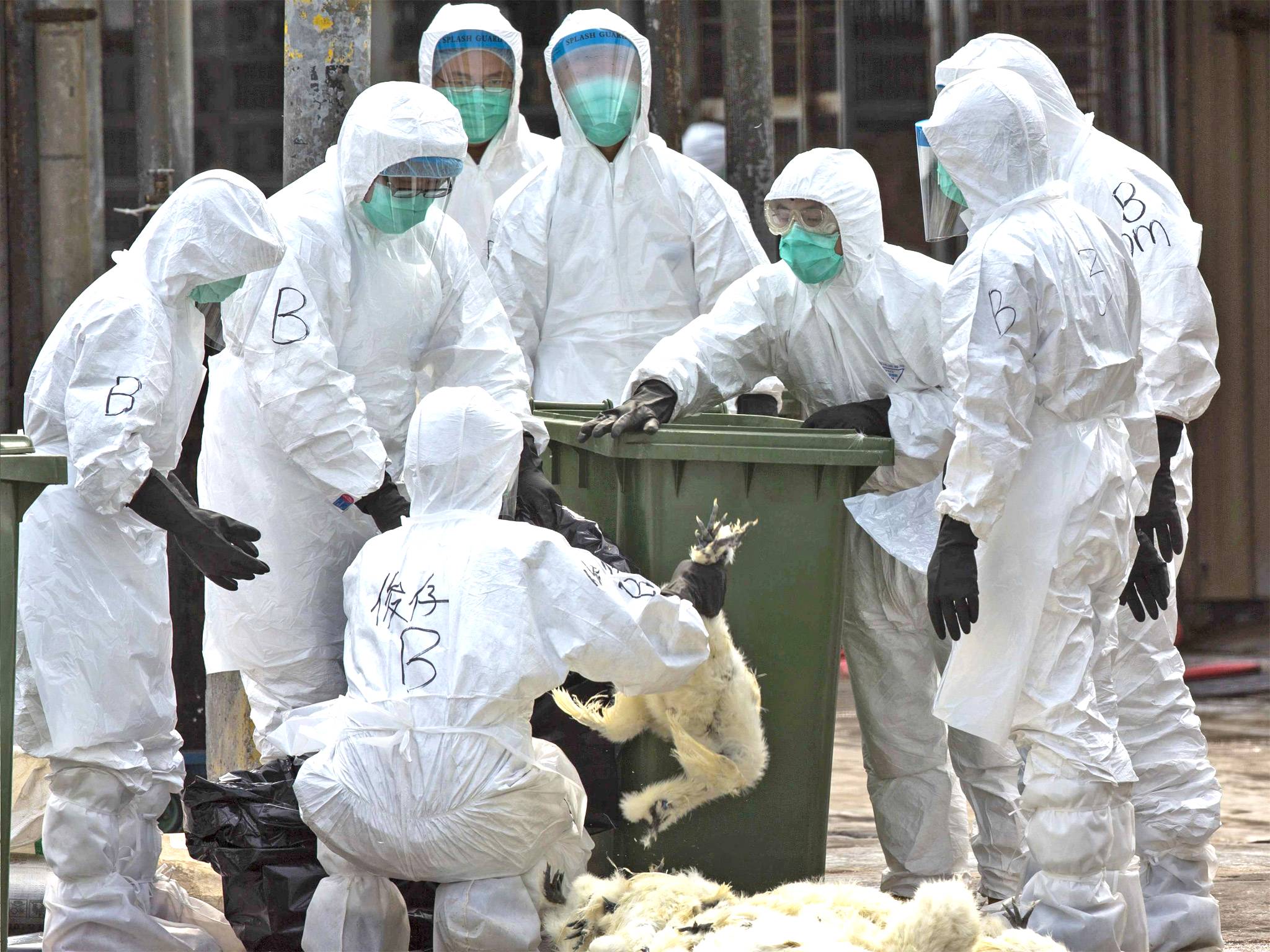Scientists talk of 'pandemic potential' after first confirmed human death from new strain of bird flu
Elderly woman from south east China is the first casualty of a worrying new strain, called H10N8

Your support helps us to tell the story
From reproductive rights to climate change to Big Tech, The Independent is on the ground when the story is developing. Whether it's investigating the financials of Elon Musk's pro-Trump PAC or producing our latest documentary, 'The A Word', which shines a light on the American women fighting for reproductive rights, we know how important it is to parse out the facts from the messaging.
At such a critical moment in US history, we need reporters on the ground. Your donation allows us to keep sending journalists to speak to both sides of the story.
The Independent is trusted by Americans across the entire political spectrum. And unlike many other quality news outlets, we choose not to lock Americans out of our reporting and analysis with paywalls. We believe quality journalism should be available to everyone, paid for by those who can afford it.
Your support makes all the difference.Chinese scientists have said the “pandemic potential” of a new strain of bird flu “should not be underestimated” after the first known human infection resulted in the death of an elderly woman.
The new strain is a variant of a virus known as H10N8, which scientists believe may have originated in wild birds, and later spread to poultry.
The victim, a 73-year-old woman from Nanchang City in south-eastern China, was the first person confirmed to have been infected with the new type, and a second case has since been discovered, raising concerns that the virus has evolved so that it can transfer easily from birds to humans.
Its emergence coincides with a surge in the number of cases of another bird flu strain, H7N9, which is known to have infected 286 people since March last year, causing 60 deaths. The vast majority of cases have occurred in China, but Taiwan has also recorded two infections, and the virus is known to have spread to Hong Kong, which has seen four cases.
Nearly half of the H7N9 infections since March have occurred in 2014, and Chinese authorities have warned that large numbers of people travelling across the country for the Chinese New Year may further the spread of the virus.
However, fears of a major flu pandemic have been allayed because, so far, the virus has shown no signs of mutating into a form that can be easily transmitted between humans, with the majority of cases occurring in people who had recently come into contact with poultry.
With current data, there is no way of knowing whether the new H10N8 will transfer more easily between humans, but scientists said that great vigilance was needed.
In their report of the death, published in The Lancet medical journal today, public health scientists in China said that it “further increases the importance of surveillance for pandemic preparedness and response”, adding that “ the pandemic potential of this novel virus should not be underestimated".
However, Dr John McCauley, director of the World Health Organisation’s Collaborating Centre for Influenza, said that the “ epidemiological significance” of the infection remained “unclear”.
“Previously we did not think that H7N9 infections might be so lethal,” he said, referring to fatal cases in China. “Now we also must consider H10N8 as well.”
“More human infections by avian H10N8 cannot be ruled out,” he said, adding that the virus did not cause serious disease in poultry so would be difficult to detect. However he said the virus was not “expected to be transmitted well between humans”.
The 73-year-old victim had visited a live poultry market a few days prior to infection, according to the report, She went to hospital with fever and severe pneumonia on 30 November 2013, and despite antibiotic and antiviral treatment developed multiple organ failure and died nine days after falling ill. H10N8 was not detected at the poultry market she had visited, so the source of infection remains officially unknown.
It appeared likely that “underlying conditions” exacerbated the infection, Dr McCauley said.
Dr Mingbin Liu, from the Nanchang City Center or Disease Control and Prevention, who co-authored the paper, said that a second case had been identified in the same province at the end of January: a 55-year-old woman who is understood to be in a stable condition.
“This is of great concern because it reveals that the H10N8 virus has continued to circulate and may cause more human infections in future,” he said.
Join our commenting forum
Join thought-provoking conversations, follow other Independent readers and see their replies
Comments